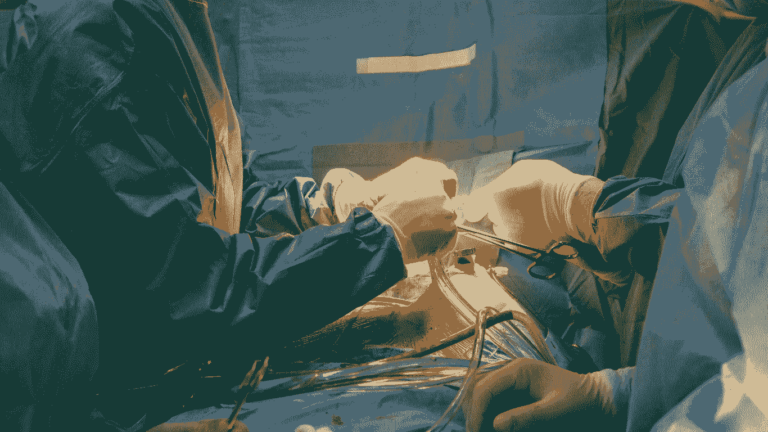Understanding Lymphovenous Bypass Surgery
Understanding Lymphovenous Bypass Surgery: Procedure, Benefits, and Recovery
Lymphovenous bypass surgery, a breakthrough in managing lymphedema, has transformed the lives of countless patients. This minimally invasive procedure has improved lymphatic drainage, reduced swelling, and enhanced overall quality of life. Whether you are new to the concept or looking to deepen your understanding, this guide will walk you through the essential details of the procedure, its benefits, and what recovery entails.

What Is Lymphovenous Bypass Surgery?
A Revolutionary Approach to Lymphedema
Lymphovenous bypass surgery is a microsurgical technique to treat lymphedema characterized by swelling due to impaired lymphatic fluid drainage. This procedure redirects the excess fluid into the venous system by connecting tiny lymphatic vessels to nearby veins, alleviating symptoms and preventing complications.
Who Can Benefit?
The surgery is ideal for patients with early-stage lymphedema, often caused by cancer treatments, infections, or congenital issues. Candidates typically experience swelling, discomfort, and a reduced range of motion, which can significantly impact their quality of life.
The Procedure: A Step-by-Step Overview
Preoperative Preparation
- Consultation: Patients undergo a thorough evaluation, including imaging tests like lymphoscintigraphy or indocyanine green (ICG) lymphography, to map lymphatic pathways.
- Lifestyle Adjustments: Smoking cessation and maintaining a healthy weight are often recommended to optimize outcomes.
- Pre-surgical Assessment: A team of specialists evaluates the patient’s overall health and suitability for the procedure.
Surgical Steps
- Anesthesia: The surgery is performed under general or local anesthesia, depending on the complexity and patient preference.
- Microsurgical Technique: Surgeons identify lymphatic vessels and nearby veins using high-powered microscopes.
- Anastomosis: Surgeons create connections (anastomoses) between lymphatic vessels and veins to redirect fluid.
- Closure: The incisions are minimal, and sutures are applied to ensure healing.
Duration and Hospital Stay
The procedure typically lasts 2-4 hours, and most patients can go home the same day or after an overnight stay.
Benefits of Lymphovenous Bypass Surgery
Immediate and Long-Term Advantages
- Reduced Swelling: Significant improvement in limb size and fluid retention.
- Pain Relief: Alleviation of discomfort caused by swelling and pressure.
- Improved Mobility: Enhanced range of motion in affected areas.
- Aesthetic Improvements: Reduction in visible swelling restores confidence.
- Lower Risk of Infections: Decreased susceptibility to cellulitis and other complications.
Enhanced Quality of Life
Patients often report a boost in their physical and emotional well-being, as the surgery minimizes the daily challenges associated with lymphedema.
Recovery: What to Expect
Postoperative Care
- Rest and Elevation: Keeping the affected limb elevated reduces swelling.
- Compression Therapy: Wearing compression garments supports lymphatic flow and prevents fluid buildup.
- Physical Therapy: Exercises tailored to improve circulation and restore strength are vital.
Follow-Up Visits
Regular check-ups ensure the procedure’s success and monitor for potential complications, such as blood clots or infections.
Timeline for Recovery
- Short-Term Recovery: Most patients resume light activities within a week.
- Long-Term Results: Noticeable improvements in swelling and mobility are often seen within 3-6 months.
Risks and Considerations
Potential Complications
While generally safe, lymphovenous bypass surgery carries some risks, including:
- Infection
- Scarring
- Failure of anastomoses
- Minor bruising or bleeding
Managing Risks
Choosing an experienced surgeon and adhering to postoperative guidelines significantly minimize these risks.
Lymphovenous Bypass Surgery: A Case Study
A 45-year-old breast cancer survivor with secondary lymphedema underwent lymphovenous bypass surgery. Within six months, she experienced a 50% reduction in limb size, regained her full range of motion, and reported a drastic improvement in her quality of life. This case underscores the transformative potential of this innovative procedure.
FAQs: Addressing Common Questions
- Is lymphovenous bypass surgery painful?
No, the procedure is performed under anesthesia, and postoperative pain is typically minimal, managed with over-the-counter medications.
- How successful is lymphovenous bypass surgery?
Success rates vary but are generally high, with most patients experiencing significant symptom relief.
- Can the surgery cure lymphedema?
While it doesn’t cure lymphedema, the surgery effectively manages symptoms and improves quality of life.
- What is the cost of lymphovenous bypass surgery?
Costs depend on location, surgeon’s expertise, and insurance coverage. Consulting with a healthcare provider is essential for accurate estimates.
- Are there alternatives to lymphovenous bypass surgery?
Non-surgical options include manual lymphatic drainage, compression therapy, and lifestyle modifications. However, surgery is often recommended for advanced or refractory cases.
Conclusion
Lymphovenous bypass surgery represents a significant advancement in lymphedema treatment, offering hope and relief to those affected by this chronic condition. From its precise surgical techniques to the tangible benefits it provides, this procedure is a beacon of innovation in modern medicine. Patients and caregivers can make informed decisions to reclaim their quality of life by understanding the procedure, benefits, and recovery.
